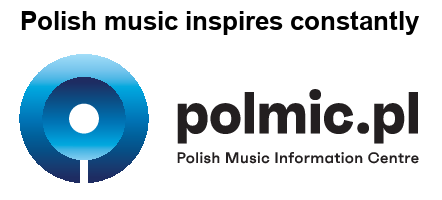Address data:
The Warsaw Autumn (Warszawska Jesień) International Festival of Contemporary Music is Poland’s biggest international event devoted to contemporary music. Started up in 1956, it once was the only festival of contemporary music in Central and Eastern Europe. The festival was originally initiated by two composers, Tadeusz Baird and Kazimierz Serocki, and called to life by the Polish Compsers’ Association Board. The festival spans across nine days each late September.
The first decades of the festival, since its launch in the mid 1950s through to the late 1980s, were a period of its particular prestige and merit. The basic principles of the Warsaw Autumn programme were established early on, with the clear aim of presenting audiences with new international and Polish music. The event always cared to ensure and protect an ongoing development of Polish music. Its formula is rather open, as the organisers aim to expose the variety of tendencies within contemporary composition. The early historic context of the festival - that of Poland under totalitarian communist regime – also made it an opportunity to actively oppose socialist ideology, through unaffected and free exchange of new musical trends.
The Warsaw Autumn has hosted performances of music by Arnold Schönberg, Alban Berg, Anton Webern, Edgar Varese, as well as Bela Bartók and Igor Stravinsky. The festival also presented contemporary avant-garde composers, with pieces from Pierre Boulez, Luigi Non , Bruno Maderna and John Cage.
Its modernist image was established quite early on, with very few orthodox works featured on the programme. The majority of presented compositions are very advanced, from radical sound effects in the Webern spirit, through trends that are evocatice of world music or historic sound, to audio-art and sound installations. The festival concerts were always attended by a variety of composers, performers, musicologists from across the country and all over Europe. It is thanks to this phenomenon that the Warsaw Autum festival quickly gained international recognition.
Currently the festival is still perceived as a creative and innovative event, now boasting a history and heritage gathered over decades of its functioning. Major national insitutions collaborate with the festival, including the National Philharmonic, the Polish Radio, Teatr Wielki - National Opera, the Adam Mickiewicz Institute, and embassies, cultural institutions and foundations. The Composer’s Association selects members of the Repertoire Commission each year, who then author the annual programme of the festival. Each edition of the event is accompanied by a voluminous programme book, a precious source of information on contemporary music across the world. Another such treasure trove is the Kronika dźwiękowa, or Sound Chronicle, released with each edition of the festival. It is a series of recordings of compositions performed at the event. Since the year 2000, the Sound Chronicles have expanded to include not only compositions authored by Polish artists but also those from across the world.
The recent growth of the festival has seen performances expand from traditional concert halls to sports arenas, old post-industrial spaces, new architectural constructions and music clubs. The music is more and more frequently accompanied by an electro-acoustic context and its performance demands complex sound distribution systems. The artists and performers explore the spatial dimension as an important factor of the general form, and they toy around with new technologies and multimedia installations.

Rynek Starego Miasta 27
00-272 Warsaw, Poland
e-mail:
tel: +48 785 370 000
The website was modernised thanks to the support of the Minister of Education and Science under the Science for Society II program.
